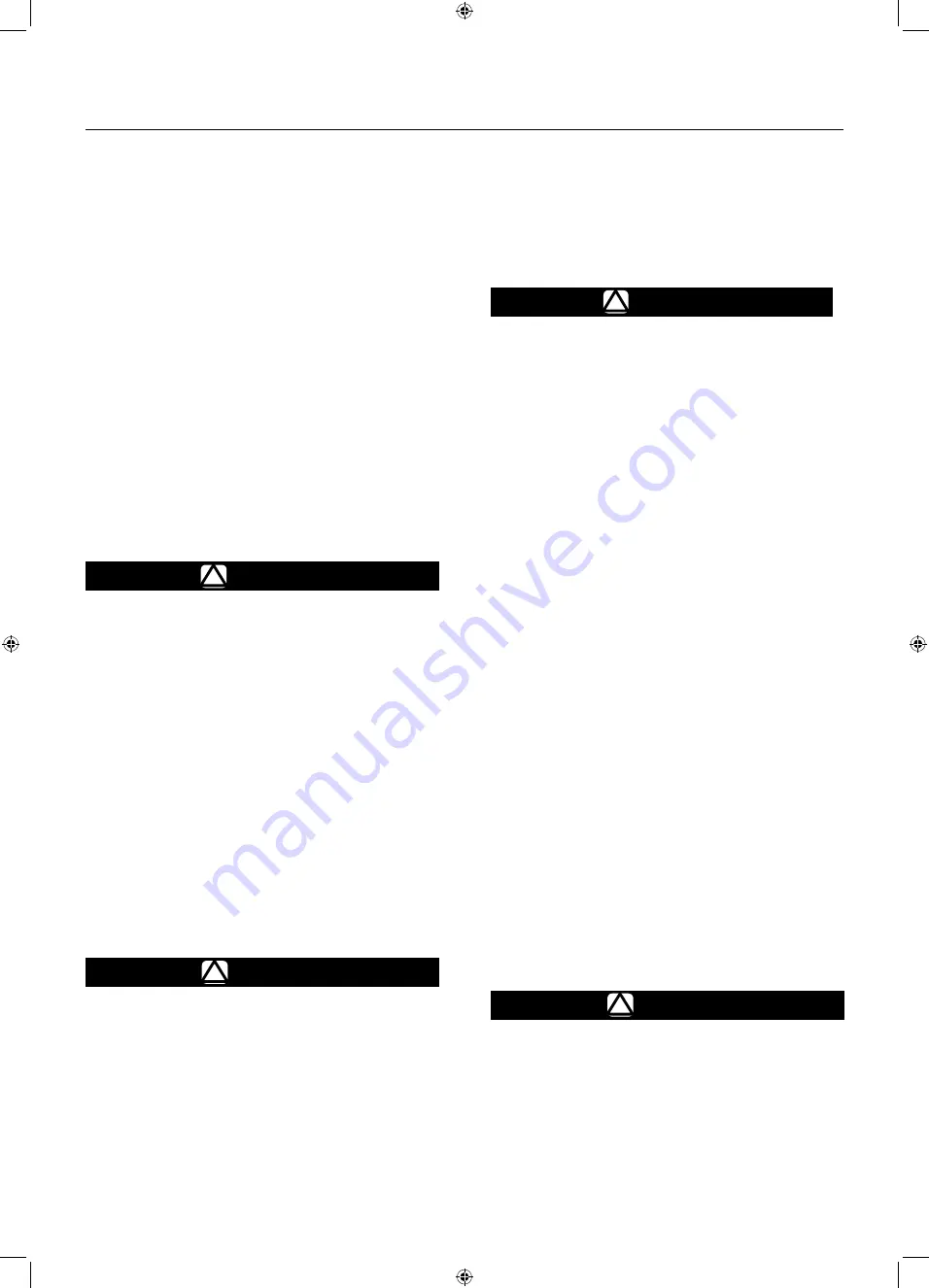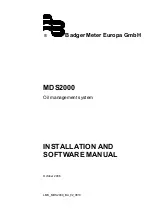
Type HSR regulators provide internal relief that limits the
total outlet pressure buildup over setpoint. This internal
relief may be adequate for the application, if not, provide
additional pressure relief or a pressure-limiting device
downstream. Regulators should be inspected for damage
after any overpressure condition.
!
WARnInG
To avoid personal injury or property
damage due to explosion or damage to
regulator or downstream components
during startup, release downstream
pressure to prevent an overpressure
condition on the diaphragm of
the regulator.
In order to avoid an overpressure
condition and possible equipment
damage, pressure gauges should
always be used to monitor pressures
during startup.
Startup
With proper installation completed, slowly open the
shutoff valve. Check all connections for leaks. Check
the downstream equipment for proper operations.
Adjustment
To increase the outlet pressure setting, turn
the adjusting screw clockwise. To reduce the
outlet pressure setting, turn the adjusting screw
counterclockwise. A pressure gauge should always
be used to monitor downstream pressure while
adjustments are being made. Do not adjust the spring
to produce an outlet pressure setting above the limit
identified on the information label. If the required
pressure setting is not within the range of the spring
being used, substitute with the correct spring. When
changing the spring, also change the range identified
on the information label to indicate the actual pressure
range of the spring in use. After the spring adjustment
has been completed, replace the closing cap.
Taking Out of Service (Shutdown)
!
WARnInG
To avoid personal injury resulting from
sudden release of pressure, isolate
the regulator from all pressure before
attempting disassembly.
Before installing the regulator, check for damage
which might have occurred in shipment. Also check
for dirt or foreign matter which may have accumulated
in the regulator body or in the pipeline. Apply pipe
compound to the male threads of the pipeline
and install the regulator so that the flow is in the
direction of the arrow cast on the side of the body.
The diaphragm actuator assembly can be rotated to
any position relative to the body, in 90° increments.
Remove the two cap screws that hold the body
to the actuator in order to rotate the diaphragm
actuator assembly.
Do not install the regulator in a location where there
can be excessive water accumulation, such as directly
beneath a downspout or in an undrained pit.
To obtain the maximum flow capacities or other
performance characteristics, the length of pipe from
the regulator outlet to the meter should have no bends
and should be the same size as the regulator outlet.
Replace the regulator if water gets into the spring case
or the lower casing of the regulator.
CAuTIOn
You are advised to use new vent
piping because defective threads on
the relief vent piping may interfere
with the venting assembly if the
piping obstructs the movement of the
vent flapper.
On indoor installations, the vent should be piped
outside the building. Remove the screen from the
regulator vent connection and connect vent piping
from that connection to the outdoors. Install a weather
and insect resistant vent assembly on the outside
end of the pipe. Inspect the vent opening regularly.
On some installations, it may be necessary to install
the regulator beneath a protective hood. The vent
should be pointing or sloping down sufficiently to allow
any condensate to drain. Also check the regulator
periodically for external or internal corrosion.
Overpressure Protection
!
WARnInG
Some type of overpressure protection
is needed if actual inlet pressure can
exceed the outlet pressure rating.
Overpressuring any portion of this
equipment may cause damage to
regulator parts, leaks in the regulator
or personal injury due to bursting of
pressure-containing parts or explosion
of accumulated gas.
Type HSR
2
VCIGD-11698-EN.indd 2
2/22/2019 7:46:25 PM






















